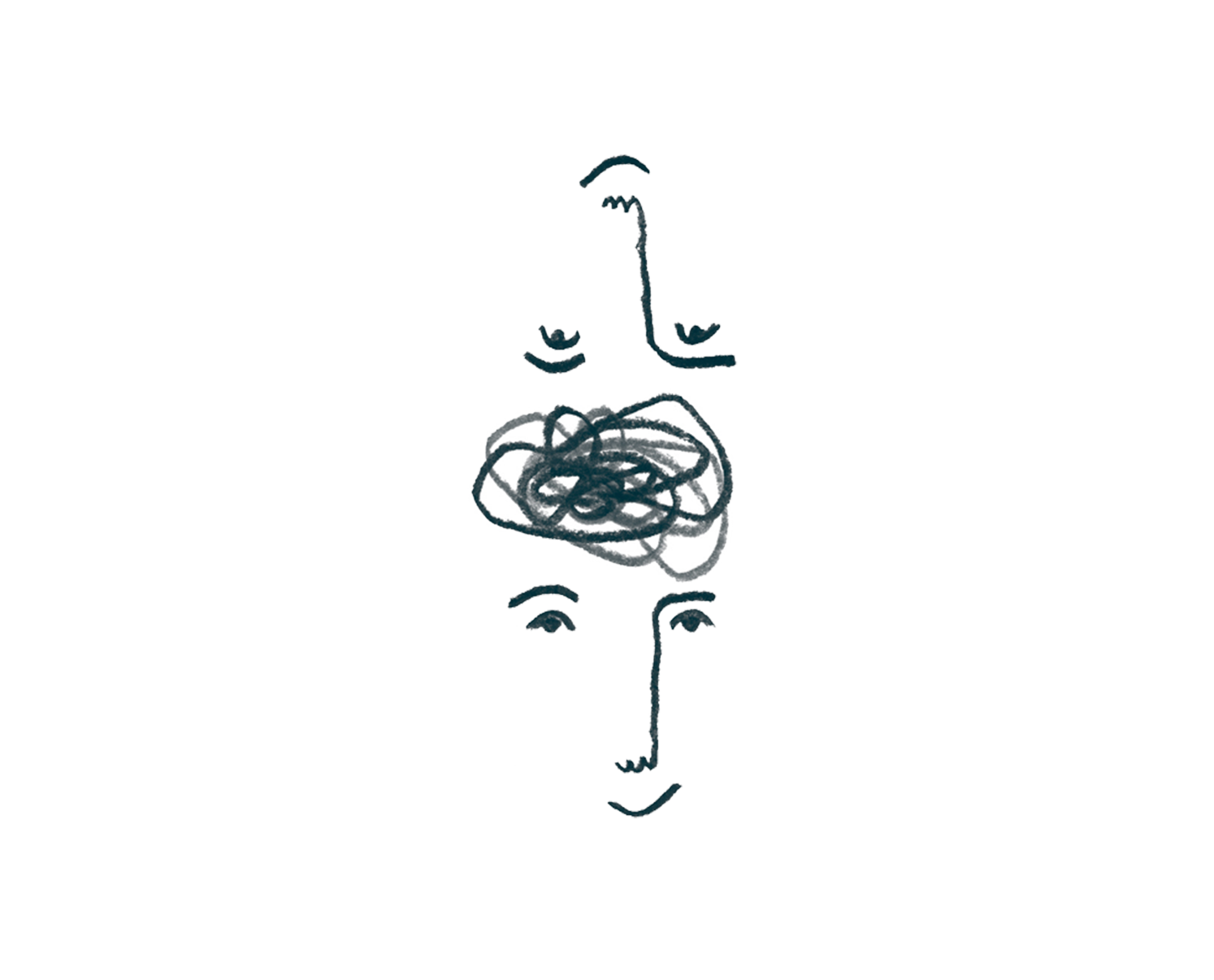I don’t like the way I have been seeing the term mindset used as an accusation, as a binary assessment that someone is stuck in a way of thinking that they need to be shifted out of. Mindset is not an absolute term. It’s a way of understanding and thinking about something, manifested through behaviours. Those behaviours can and do change, based on the situation at hand, which is why I like to use an approach that reflects that; ‘Above the Line or Below the Line’. This video and article provides a great explanation of the concept.
This model is about how you can evolve your thinking and behaviours to move to a state of curiosity, learning, collaboration and action.
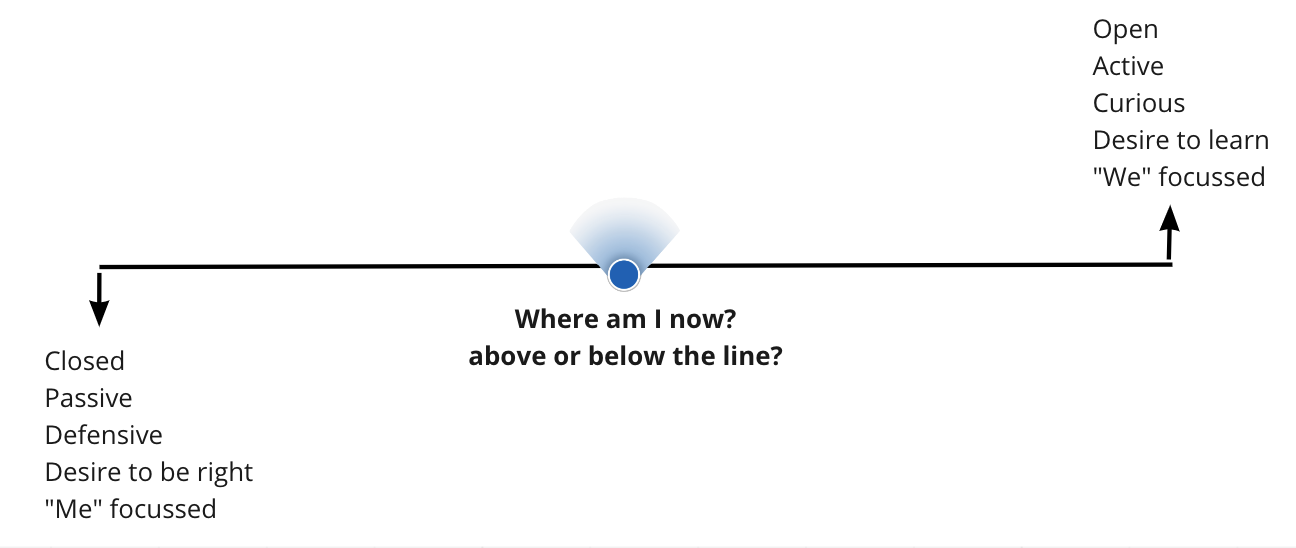
The question you need to ask of yourself is “Where am I now?” “Am I able to bring my best self into this environment, and if not, why?” It’s about how you turn up, how you see yourself and how other people see you.
Above the Line thinking and behaviours
Above the line thinking and behaviours are about being open and curious, having a desire to learn and being able to respond effectively and usefully in any given situation. These positive behaviours include:
- Being open
- Being curious
- Desire to learn
- Being collaborative and team focussed
- Taking responsibility
- Contributing
- Seeing possibilities
- Seeking solutions
- Finding better ways
- Speaking up
- Seeking and providing feedback
- Ensuring transparency
- Caring personally
- Encouraging others
When your thinking and behaviours are below the line, you're defending yourself, being closed to others and have a desire to be right. These behaviours are the negative mirror opposite of above the line positive behaviours.
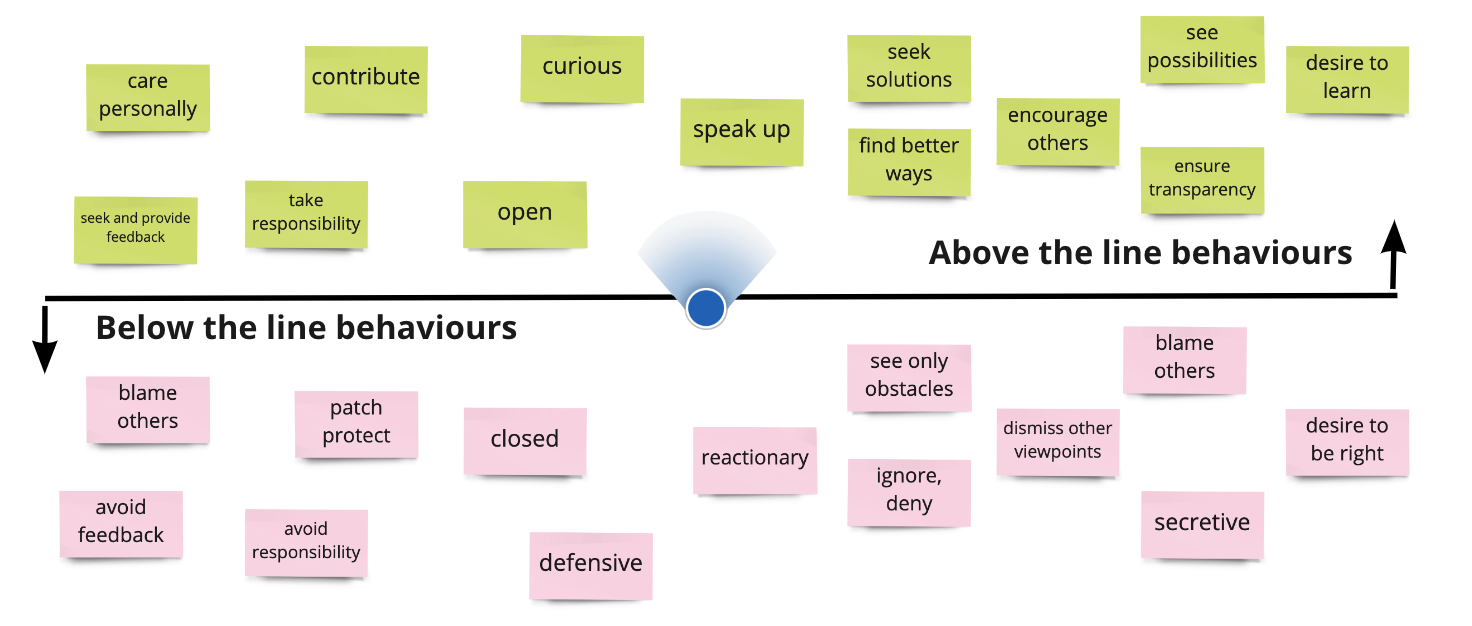
Me: My personal responsibility
The thing I like about the Above the Line model is that it is relative rather than absolute. There can be situations when we all slip below the line, it is about having the courage and insight to realise when and why this occurs. It’s about actively taking personal responsibility for your own behaviours and asking yourself if you do, or do not, exhibit them.
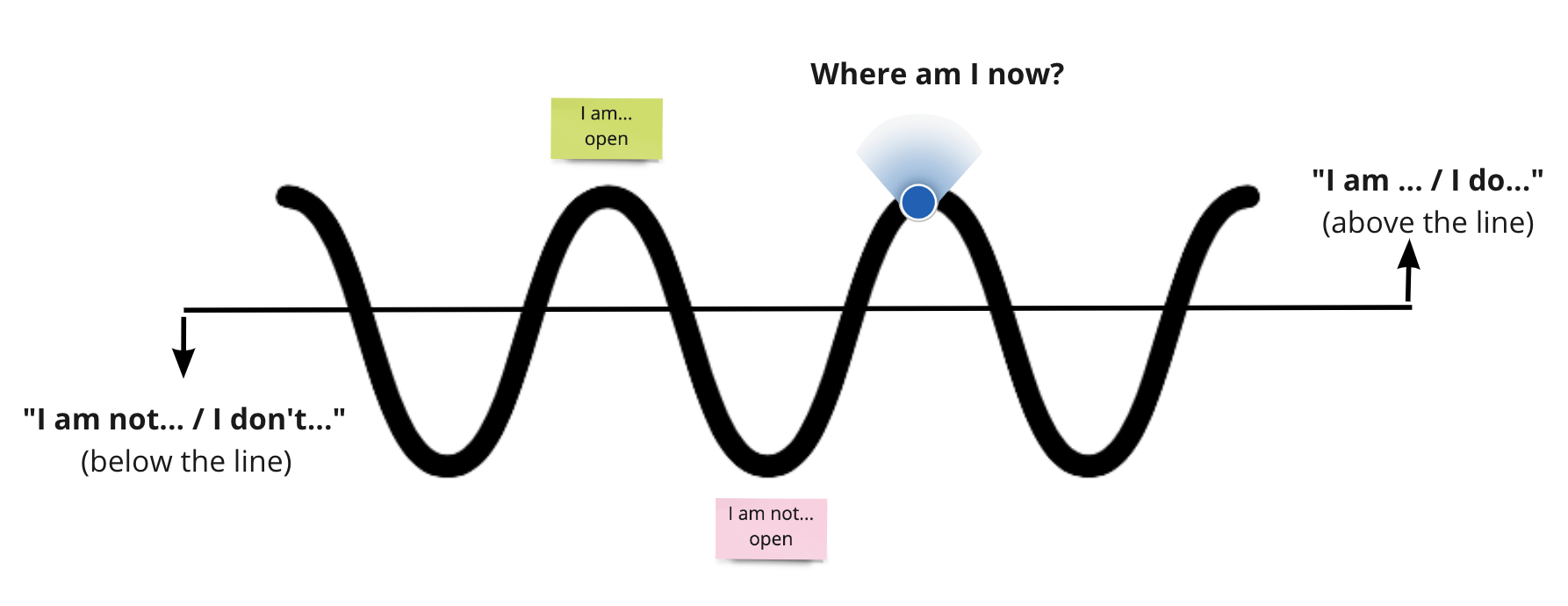
My Environment
It’s not just about personal responsibility though, your environment has an impact too. Environment is a fairly broad term, it can be the people (individuals or a group) around you, an organisation, a system, or a specific situation. The impact of this environment can be actual or perceived. It is about assessing if you feel psychologically safe and have vulnerability-based trust with your team , by asking yourself if your environment encourages, or discourages you from exhibiting positive behaviours.
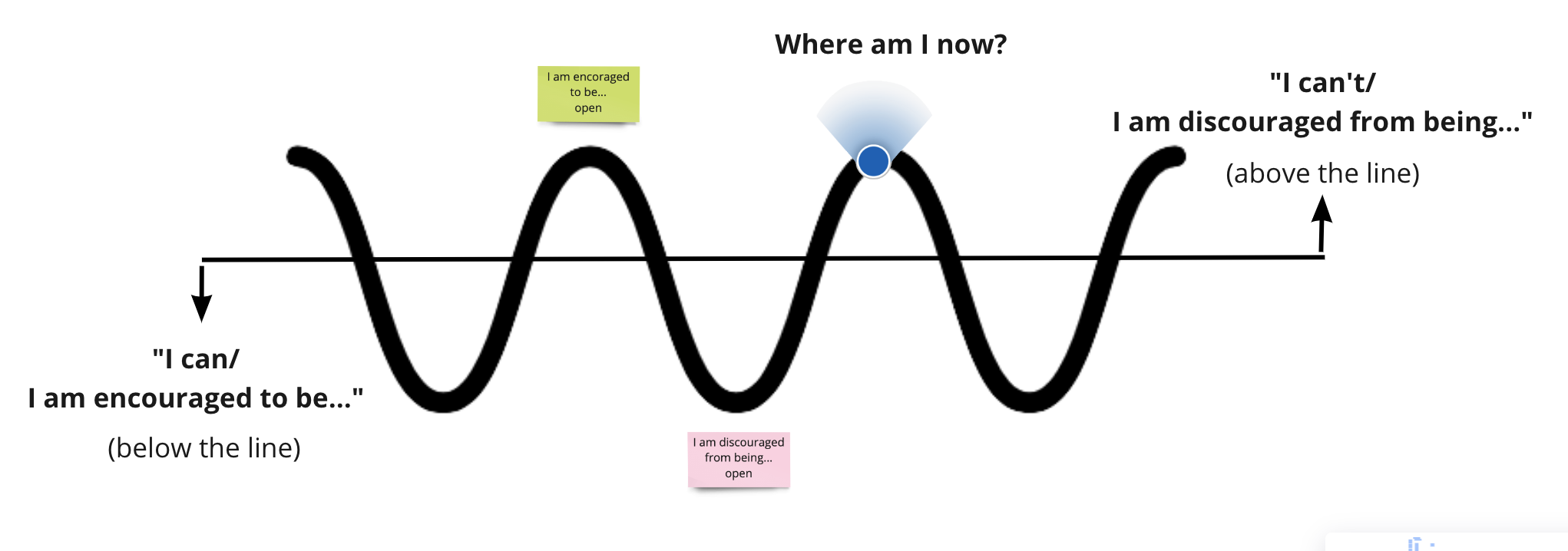
Putting it into a Quadrant
What a single dimension of this model does not do though, is draw the distinction between those two, between personal ownership of our behaviours and the impact our environment has on them. To resolve that and combine both aspects, I’ve found it useful to reframe the line as a quadrant (I do love a good quadrant).
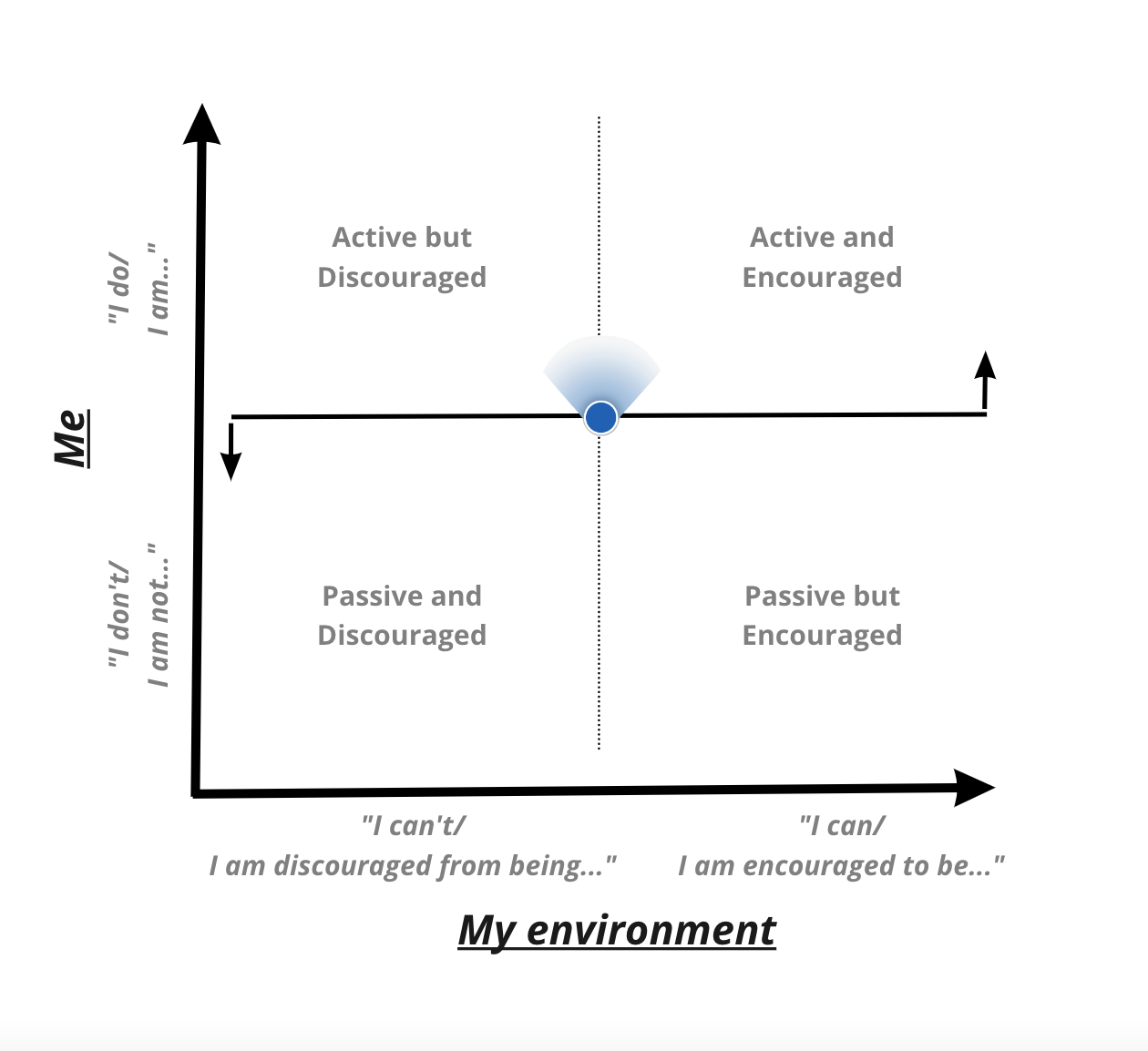
Plotting out behaviour questions
The positive behaviour questions I use for ‘personal responsibility (Me)’ and Environment’ dimensions, are as follows:
Ask yourself... | Do you exhibit this behaviour | |
Me | "I do/I am..." "I don't/I am not..." | “..open” “...curious” “...seek to learn” “...take responsibility” “...contribute” “...see possibilities” “...seek solutions” “...find better ways” “...speak up” “...seek and provide feedback” “...ensure transparency” “...care personally” “...encourage others” |
My Environment | "I can/ I am encouraged to be..." "I can't/ I am discouraged from being..." |
Ask yourself these behaviour questions and plot out the answers on the quadrant. The aim is to be in the top right hand area, ‘Active and Encouraged’ exhibiting positive behaviours in an environment that supports you to do so. Be honest, if you are not in the top right hand, think about how you and your environment are impacting your behaviours, and what you need to do to shift top right.
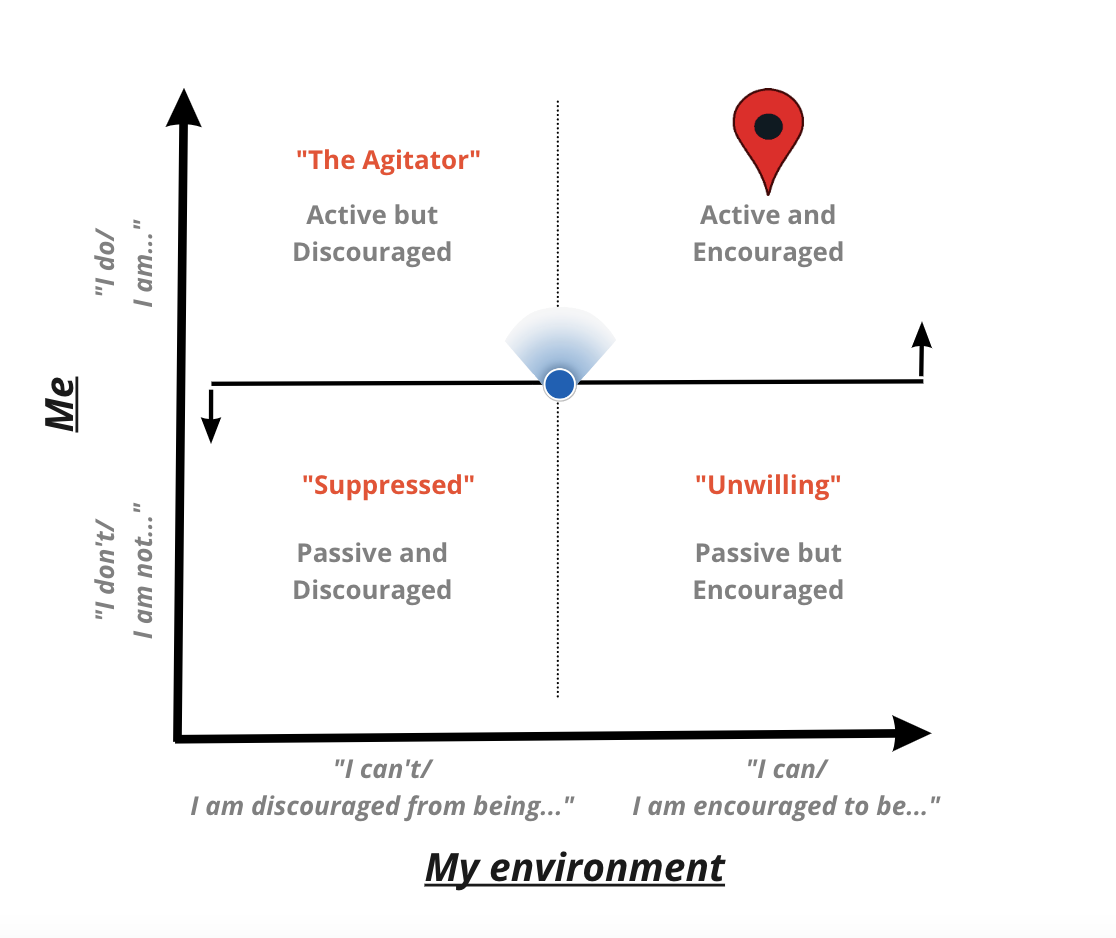
I describe each of the 4 areas as follows:
- Passive and Discouraged: people here are “suppressed”, their environment discourages them from exhibiting positive behaviours and as a result they are reluctant to show them
- Active but Discouraged: the environment actively discourages positive behaviours, but the person is an “Agitator” looking to exhibit them and lead by example. Probably time to get out of that situation, unless something changes and your behaviours start to become adopted by others
- Passive but Encouraged: this environment actively encourages, but for some reason people are “Unwilling” to be open and positive. This could be because they perceive the environment not to be psychologically safe and need more active support
- Active and Encouraged: the sweet spot, this is where you want to be, where you can be open and positive and you are encouraged to be so by the environment and people around you.
This Above or Below the Line quadrant model is situational and is not absolute. It is intended to review and reflect where you are at any given time. It’s not a static map or 'one off' exercise, keep a mental model in your head. I use it to seek to understand why I am responding the way I am first, then look to see if the environment is impacting others around me. Is there something in you or the environment that needs to change, to encourage them to be open, active and curious? That’s the sort of mindset I like to see and encourage.
If you give this a try let me know how you get on, I'd love to hear about it.
